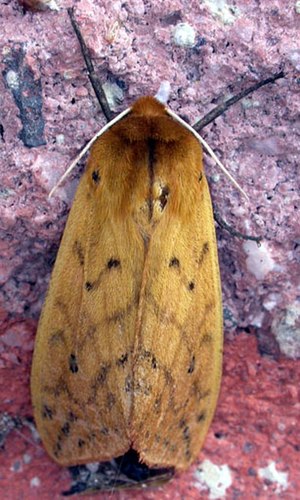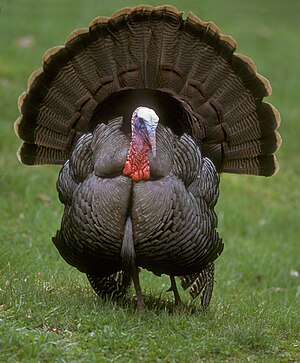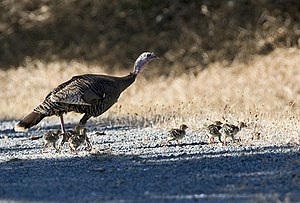2-15 November
The first week of November was cold and windy preventing me from opening nets until Saturday the 6th. I got a call the previous Saturday about a hummingbird visiting a feeder so on Tuesday the 2nd I traveled to Wareham to check it out. Bonnie Chapin, the homeowner, was very accommodating. I set my trap up near where she had the hummer feeder and placed the feeder inside the trap.
I had to move the Mandevilla Vine so the hummingbird wouldn't choose the flowers over the feeder.
With the rest of the banding equipment set up in the back of my car, I waited patiently in the front seat for the hummingbird to come in to feed. Invisible fishing line is attached to the door that I close as soon as the bird enters the trap. Fifteen minutes went by and then I heard the sound of its wings. The hummer went right to the spot where the feeder was and then it noticed the feeder in the trap. It hovered on the trap's side and back but didn't get around to the front. Instead it flew up to a nearby burning bush and sat perched on a branch likely pondering what to do next.

The day was very gray so I was unable to get a good picture of him, but I could now see a few gorget feathers. The question was, where they red or purple? When it gets to be late in the season and a hummingbird shows up there is the possibility that it is a vagrant hummingbird, that is a bird from a different area, say the west coast, and not a Ruby-throated Hummingbird. Since I saw no rufous (rusty-red) coloration in the tail I determined it was either a Ruby-throated or Black-chinned Hummingbird, the western counterpart of the ruby-throat. I also determined it was most likely a young male due to the few gorget feathers, although occasionally an older adult female could sport a few of those feathers. The head and back of the black-chinned tend to be a bit grayer-green than illustrious green and the outer primary feather is more club-shaped and less pointed than the ruby-throat.
Normally when I go to band a hummingbird I capture the bird within the first five minutes of setting up the trap. This was a tough little guy though and he would visit the trap but not enter it and then sit back up in the bush for 20 minutes or so. This went on for three hours with him leaving all together every now and then. After the 3rd hour he didn't return so I waited another hour and then left. Bonnie called me the next morning to say he was back to feed at dusk and was there again in the morning. I decided to give it another try. One of my assistants, Jo-Anna, joined me.
I went through the same routine as the day before and while we were at the front door talking with Bonnie he came back, this time taking a drink at the bird bath. It was a nice sunny day and the light reflected off his red gorget feathers- ruby-throat! He flew up to the burning bush, sat for a few minutes and then went right into the trap. Now why couldn't he do that yesterday?????
I removed him from the trap and banded him. The bands are very tiny. Here is an example of a band on a hummingbird (not the same bird).
Measurements, shape of his 6th primary feather, striations to the bill, and buffy edging to his body feathers proved him to be a hatch year male. I counted 8 red gorget feathers.
When we were done, Bonnie had the privilege of releasing him. He stayed on her hand for quite awhile reluctant to leave her.
All it took was a slight blow to his feathers, as if you were blowing out a candle, and off he went right back to the burning bush. The feeder was taken out of the trap and put back just as he liked it. According to Bonnie he was right back at the feeder soon after we left. And as far as I know he is still there! She plans to call me when she no longer sees him.
By Saturday the winds had subsided and while it was still on the cool side we were able to get back to our banding site. We ended up with 58 birds, quite a drop from our 100+ days from the previous weeks. Numerous nets had to be closed early due to the astronomical high tide. Yellow-rump numbers had dropped considerably with only 14 handled. We did manage to get a few kinglets of both species, including this male Ruby-crowned Kinglet.
We caught 18 previously banded chickadees and Yellow-breasted Chat and banded two species of woodpecker, Hairy Woodpecker (top photo) and a Northern or Yellow-shafted Flicker (bottom photo), both first year females.
On Halloween, thirty Northern Bobwhite raised by fifteen-year-old Nicholas Fiore as a licensed project to help the species populate this habitat on the Cape, were released on the island. They seemed to gravitate to our banding table when we were there. Maybe our voices indicated food! Isn't it amazing how their cryptic coloration just blends in so well with the leaf litter?
We tried banding Sunday the 7th, but it was almost pointless as the wind picked up right after opening and we closed early after capturing only 9 birds.
The second week of November was quite rainy and windy so banding was out until November 12th. While the wind had subsided somewhat Jo-Anna and I still had an unproductive day with only 12 birds handled. Gretchen and I had a better day on Saturday the 13th. We caught an American Tree Sparrow, a first for this fall season. You can see the dark spot often present on the breast.
They have bi-colored bills, dark on the top and yellowish on the bottom.
Gretchen extracted a first year male Sharp-shinned Hawk making two for this fall season.
We are now capturing hardly any yellow-rumps and both White-throated and Swamp Sparrows have been scarce for us this year. I fear we will also miss banding Orange-crowned Warbler, Fox Sparrow, and Winter Wren, all species we normally capture later in the fall but have eluded our nets thus far. On Sunday the 14th we did manage a few more hatch year Swamp Sparrows
and we recaptured an adult Swamp Sparrow. The gray vs. yellowish supercilium is clearly visible in the two age groups.
I looked up the history of this adult bird and as often happens with our recaptured birds it showed up either on or near the same date as previous years in the same net. He was a bit late this year!
October 31, 2007 - Net 17- first banded as a HY (hatch year)
October 21, 2008 - Net 17 - recaptured
October 21, 2009 - Net 17- recaptured
November 14, 2010 - Net 17 - recaptured
Gretchen and I banded again on Monday the 15th. Another slow day. While I was banding a Song Sparrow, a fly flew out from the feathers and landed on my hand. It was a member of the Hippobosidae family, we call them 'hippos', that feed on the blood of birds and mammals. Their common name is Louse Fly or Flat Fly because they can slip through the feathers unnoticed. I see them occasionally on birds.

The highlight of the day had to be at the end of our banding day. We caught a species we had never banded before. As I rounded the shrubs and entered the net lane I was totally surprised to see a crow in the net! These birds are typically far too smart to be captured in a mist net, let alone one of such small mesh. I had never handled a crow before and this was one big bird. He was quite tangled. I had to cradle the bird against my body carefully removing the netting from the feet so I could untangle the netting from the wing. I caught a great whiff of fish. I though to myself, "Fish Crow"? American Crows will of course eat fish too, so I would have to wait to determine species until measurements could be taken. Luckily I had a large bird bag big enough to fit over the head and body and cradled it as if it were an infant on my way back to the banding table. Gretchen and I worked together to take measurements. It had a molt limit in the wing so we aged it as a hatch year. While I was busy attempting a bill measurement it got a hold of my finger and clamped down so hard I shrieked! Gretchen and I carefully pried the bill open to extricate my finger. At one point it I noticed evidence of avian pox on his eyelid, feet, and he had a good sized tumor on the edge of his right wing. It felt far stronger than any hawks I had handled. The measurements keyed the bird out as an American Crow. As I was taking a few pictures of him he vocalized and sounded like an AMCR too. His vocalizations brought in a whole host of other crows which brought to mind the Alfred Hitchcock thriller, "The Birds". Because of the sheer size and strength of this bird, the pictures didn't come out that great. The red areas on the eyelid and wing I believe are pox tumors. Imagine your finger inside that bill!


Many thanks to Gretchen Putonen and Jo-Anna Ghadban for helping these past two weeks. Birds seen, heard, or captured are between 2-15 November are shown below. Numbers reflect captured birds only.
Total Birds: 191 Total Species: 58Total Banded Species: 23 Birds/100 net-hours: 28
Common LoonNorthern Gannet
Double-crested Cormorant
Great Blue Heron
Brant
Canada Goose
American Black Duck
Mallard
Common Eider
Scoter sp.
Turkey Vulture
Northern Harrier
Sharp-shinned Hawk- 1
Red-tailed Hawk
Ring-necked Pheasant
Northern Bobwhite
Black-bellied Plover
Greater Yellowlegs
Ring-billed Gull
Herring Gull
Great Black-backed Gull
Mourning Dove
Great Horned Owl
Ruby-throated Hummingbird- 1
Belted Kingfisher
Downy Woodpecker- 3
Hairy Woodpecker- 1
Yellow-shafted Flicker- 2
Blue Jay- 2
American Crow- 1
Fish Crow
Black-capped Chickadee- 50
Tufted Titmouse- 3
Red-breasted Nuthatch
White-breasted Nuthatch
Brown Creeper
Carolina Wren- 9
Golden-crowned Kinglet- 9
Ruby-crowned Kinglet- 1
Eastern Bluebird
Hermit Thrush- 1
American Robin -2
Cedar Waxwing
European Starling
Myrtle (Yellow-rumped) Warbler- 23
Yellow-breasted Chat- 4
Northern Cardinal- 9
American Tree Sparrow- 3
Song Sparrow- 38
Swamp Sparrow- 15
White-throated Sparrow- 1
Dark-eyed Junco- 2
American Goldfinch- 10
House Sparrow
 Image via Wikipedia
Image via Wikipedia

























































